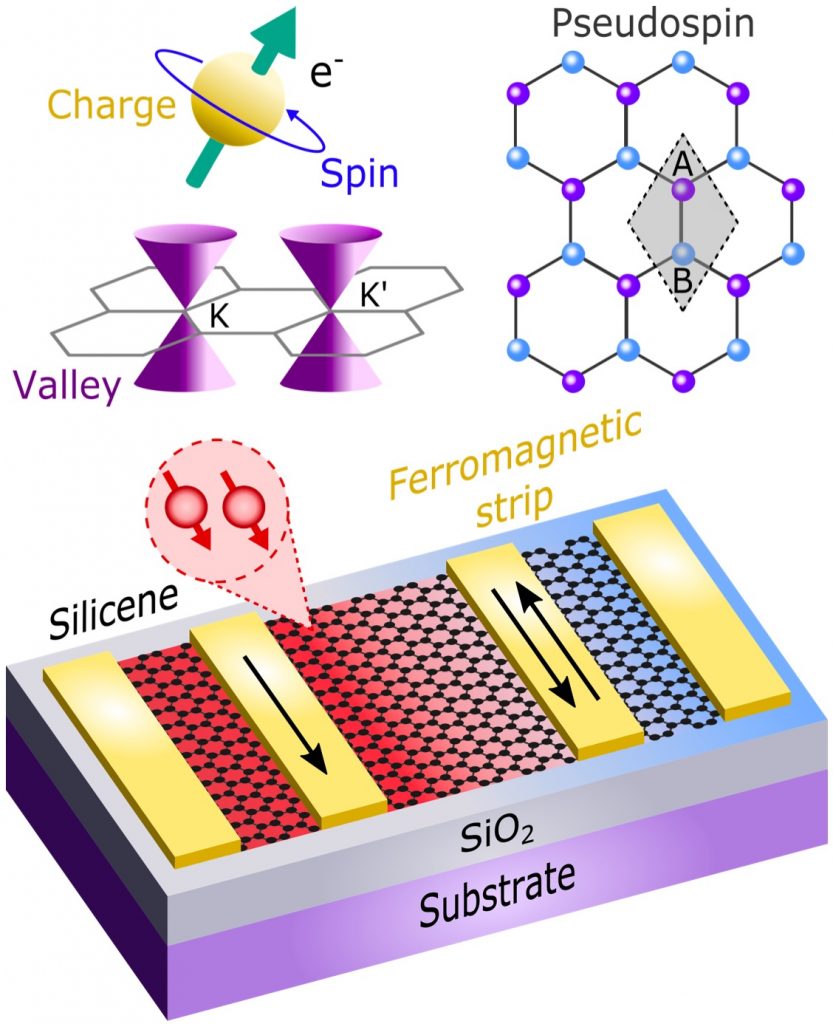The multiple degree of freedom of 2D materials rise the prospects of electronics and give rise to new paradigms such as valleytronics and pseudospintronics. In particular, the small spin-orbit interaction energy and the long spin diffusion length of graphene are ideal for spintronics.
The differentiation of spins and valleys in silicene and transition metal dichalcogenides (TMDs) opens the possibility for spin and valley polarization capabilities. The effective pseudospin polarization presented in phosphorene allows thinking in electronic devices that manipulate the degree of freedom related to the two sublattices of 2D materials. Furthermore, the magnetic proximity effect natural in 2D materials is fundamental to magnetoresistive devices. So, it is possible to think in versatile devices with spin-valley polarization and magnetoresistive capabilities.

In this context, the aim of the 2DMRG is to explore different low-dimensional structures and external effects to improve the spin-valley polarization and magnetoresistive properties of 2D materials. In particular, we study the conductance, spin-valley polarization, and magnetoresistance of periodic and aperiodic structures. We also assess the impact of important external effects such as electric and exchange fields, temperature, structural disorder, and non-collinear magnetization.
